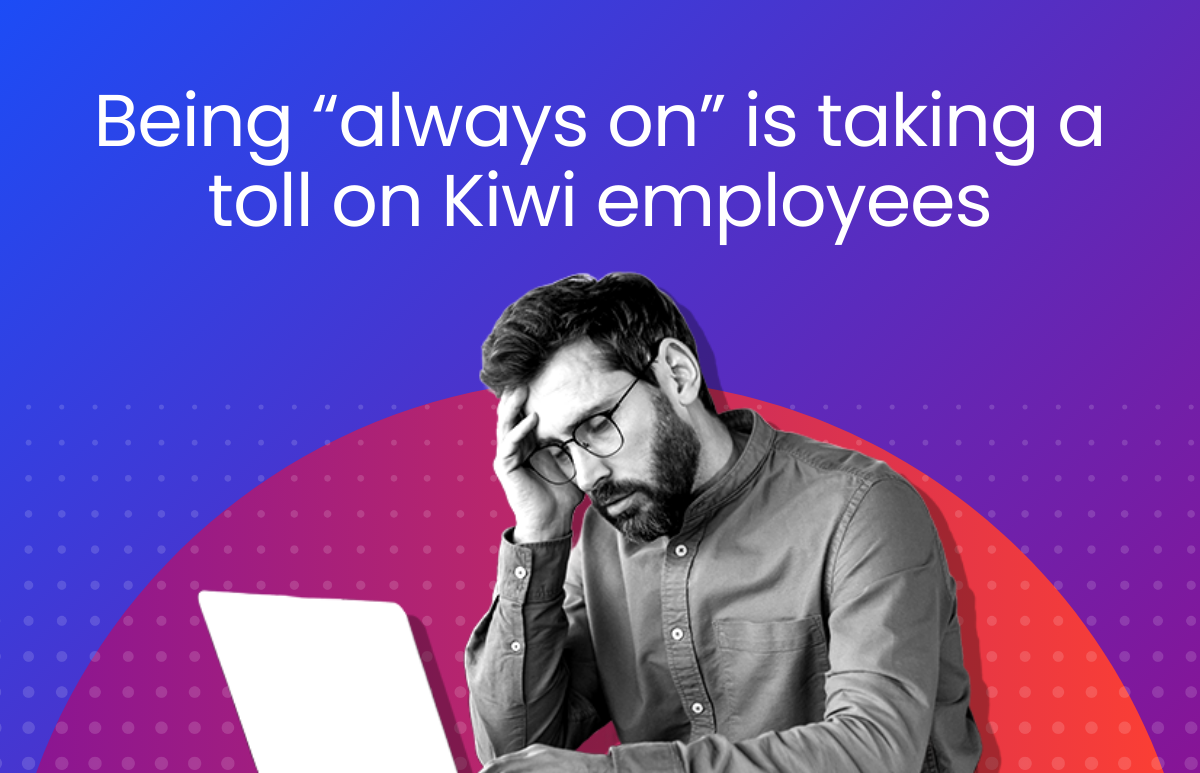What Causes Employee Disengagement?

Work takes up a huge portion of our days – and our lives. It is, therefore, imperative that work is as positive and as fulfilling as possible.
Employee engagement refers to the level of commitment that individuals show towards the objectives of an organisation. While engaged staff are enthusiastic and contribute to the success of an organisation, disengaged staff – those who are unproductive, careless and take too many sick days – cost organisations millions of dollars in revenue and hinder business performance potential.
Research by Gallup defines three levels of employee engagement:
- Engaged staff members are enthusiastic and contribute to the success of the organisation. According to Gallup, 14% of employees are “engaged”.
- Not engaged staff members do the bare minimum that is required of them. According to Gallup, the majority of the workforce (71%) is “not engaged”.
- Actively disengaged staff members show that they are unhappy at work. According to Gallup, 15% of workers are “actively disengaged”.
It’s possible for managers to motivate people to put more effort into their jobs. However, employee disengagement doesn’t occur in a vacuum – it’s usually caused by external factors that must be understood before action is taken.
What causes employee disengagement at work
- Unsatisfactory pay
- Lack of professional development
- Poor management
- Stressful workplace
- Employee is a poor fit with the company
- The organisation fails to adapt to change
1. Unsatisfactory pay
We know that unsatisfactory pay is one of the main reasons why people leave their jobs , but does financial compensation also influence engagement levels? For people who believe they’re being paid unfairly – absolutely.
Money-related stress contributes to disengagement in the workplace. If employees aren’t earning enough, they are less likely to be enthusiastic. But how much is “enough”? Well, salaries are dependent on factors like industry and location, but the Australian Bureau of Statistics (ABS) states that the median weekly gross household income in Australia is $1,701 (approx. $85,000 per annum). In New Zealand, the weekly income is $1,016 (around $76,000 yearly). If an individual feels they’re earning much less than their peers in similar industries or cities, they may feel discouraged.
However, there are other factors besides salary that influence workforce engagement levels.
2. Lack of career development
People want to learn and grow in their jobs, so they may quit if they don’t have the chance.
In Australia, 60% of surveyed workers quit because they weren’t given the chance to grow in their roles – according to research by the Institute of Managers and Leaders.
A sense of purpose is also crucial for keeping staff switched on and involved. Psychologist Daniel Pink notes that people crave roles that satisfy their need for “autonomy, mastery and purpose”. This makes sense, given that disengaged employees are often those who don’t feel challenged or who aren’t involved in exciting projects.
One company analysed over 35 million survey responses to find out why people lose interest in their jobs, and found that productivity decreases when staff don’t have a sense of accomplishment or purpose (as reported by Forbes).
ELMO’s HR Industry Benchmark Survey 2019 Report has found only 15% of businesses in A/NZ who completed the survey have fully implemented a succession management system, with 22% not even considering it at all.
3. Poor management
“The single biggest decision you make in your job – bigger than all the rest – is who you name manager. When you name the wrong person manager, nothing fixes that bad decision. Not compensation, not benefits – nothing.”
Ineffective management is a leading cause of employee disengagement. There are many forms of poor leadership, but research shows that “absentee leaders” erode staff satisfaction the most. These are managers who are psychologically absent and therefore fail to build meaningful connections with their teams. This leads to high levels of stress and low employee morale – and, eventually, active disengagement.
An absentee boss is even worse than an abusive one. Harris Poll surveyed 1000 working adults and found the top complaints about management revolve around weak communication. This typically means they do not:
– Make time to meet with employees
– Provide constructive feedback and support
– Give recognition or acknowledgement of positive contributions
– Provide clear directions
Unfortunately, it’s fairly common for an inept manager to sit at the helm of the business; Research by Gallup shows that organisations hire the wrong leader 82% of the time. Often, applicants who land managerial roles have proven hard skills (e.g. an impressive resume of business transformations and change management) but lack the required soft skills (e.g. the ability to identify employee needs and strengths, and the ability to rally a team around a cause).
4. Stressful work environment
“While stress seems to be a recognised term in the workplace, the negative outcomes of stressed and overworked employees cannot be underestimated. Workplace burnout is not only harmful to the employee at hand, it also negatively impacts the company. Stress can lead to less productivity, low staff morale and increased sick leave, which all impact a business’s bottom line.” – Nicole Gorton, Director at Robert Half Australia.
On a global scale, nearly one quarter of employees are sabotaging their health by working excessively. Australia isn’t immune to this problem – 13% of workers are reportedly putting 50 hours or more into their paid jobs each week. Even people who work the standard hours find it difficult to tune out at home, thanks to mobile technology that gives us constant digital access to the office.
COVID-19 made the blurring of work and home life worse. Most Australian and New Zealand workers had to work from home during the pandemic to follow social distancing rules.
Although working from home has many benefits (e.g. increased work-life balance), remote work during a pandemic, a stressful time, is different. COVID-19 impacted all areas of wellbeing: social, financial, mental and physical, which causes increased stress.
The Sydney Morning Herald reported that coronavirus caused one in 10 Australians to feel depressed (according to the Australian Bureau of Statistics). In New Zealand, it was reported that in the week following lockdown orders, calls to an emergency mental health helpline increased 40% in call volume.
The pressure on remote workers to perform is high, coupled with an increased reliance on technology can create an “always on” mentality. Workers are citing “fatigue” from too much digital “facetime” (e.g. video conferencing and instant messaging), which results in burn out.
It’s important for employers to recognise and acknowledge the factors that may be adding to the stress levels of their employees, and be willing to adapt so that employees feel valued and remain engaged.
Managers put business performance on the line when they ignore the detrimental impact that stress has on workplace satisfaction and staff involvement.
A survey found that 26% of businesses in Australia and New Zealand have wellness programs for their employees, and another 23% are working on them. Employee assistance programs (EAPs) showed their value during COVID-19 by supporting both employees and their families. Every organisation should ensure they offer their workforce access to an EAP. Not supporting your workforce may risk mass disengagement and dissatisfaction.
5. The employee is not a good match for the company
Employees are an organisation’s biggest asset, but they can also be the main reason for its demise – depending on how engaged or disengaged they are.
Although it’s impossible for managers to hire the best person every time, a good track record goes a long way towards creating high-performing teams. Unfortunately, most companies consistently make bad hiring choices because they fail to effectively evaluate their candidates’ attitudes.
Is it fair to blame staff for their own disengagement? In many cases, yes.
Personality drives workforce engagement variables 50% of the time. A meta-analysis of almost 45,000 global participants looked at the degree that character traits influence job satisfaction and immersion, and found that people who are optimistic, hard-working and outgoing are more likely to work proactively.
However, it isn’t always as black and white as that. Job characteristics and office culture influence engagement levels. This means that recruiters shouldn’t make hiring choices based on charisma alone.
Recruiters should hire people with different personalities. They should not reject candidates who are not enthusiastic, because these candidates may have other strengths.
6. The organisation fails to adapt to change
Work has changed around the world due to technology, cities growing, and globalization. People now want more work-life balance, so flexible work arrangements like job sharing and working from home are likely to stay common after COVID-19.
A poll by Hays found that nearly 90% of managers believe flexible arrangements help to attract and retain staff by improving job satisfaction, even before the coronavirus. They know that energized employees are more likely to engage and be productive.
Workplace flexibility is attractive to today’s workers. In fact, MetLife Australia’s Employee Benefit Trends Study (EBTS) found that 92% of employees think flexible work is a “must have” or “nice-to-have”. Therefore, organisations that hold onto antiquated practices are showing their employees that they don’t trust them to manage their own time. It’s this distrust that heightens employee disengagement and turnover.
However, since the outbreak of COVID-19, the attitude towards working from home has changed.
Coronavirus has forced the world’s largest work from home experiment, and for many it has been successful. Employers and employees are learning that remote work is productive and adaptable.
Interestingly, Forrester’s PandemicEX survey uncovered that less than half (46%) of Australians are looking forward to returning to the office once the government advises it is safe to do so. The story is the same in New Zealand: a survey by Auckland company Frog Recruitment revealed that over two-thirds (70%) of respondents said they are anxious to return to the office because they have grown comfortable working from home. These findings suggest that remote working may prevail over office-based working in the future.
This forced shift in workplace habits is an opportunity for employers to fine-tune flexible working practices. Employers that had not adopted remote working prior to the pandemic should do so, as it is ultimately the key to heightened engagement and, in turn, retention.
What is the cost of employee disengagement for your business?
It’s frustrating for managers when they ask their employees to step up and make performance improvements to no avail. Managers must find the real reason their team member is unhappy before they can fix it.
Managers can improve job satisfaction and staff involvement by listening to their team’s needs and quickly solving problems.
What is the cost of employee disengagement?
How to measure employee engagement at your business?
 HR Core
HR Core 









